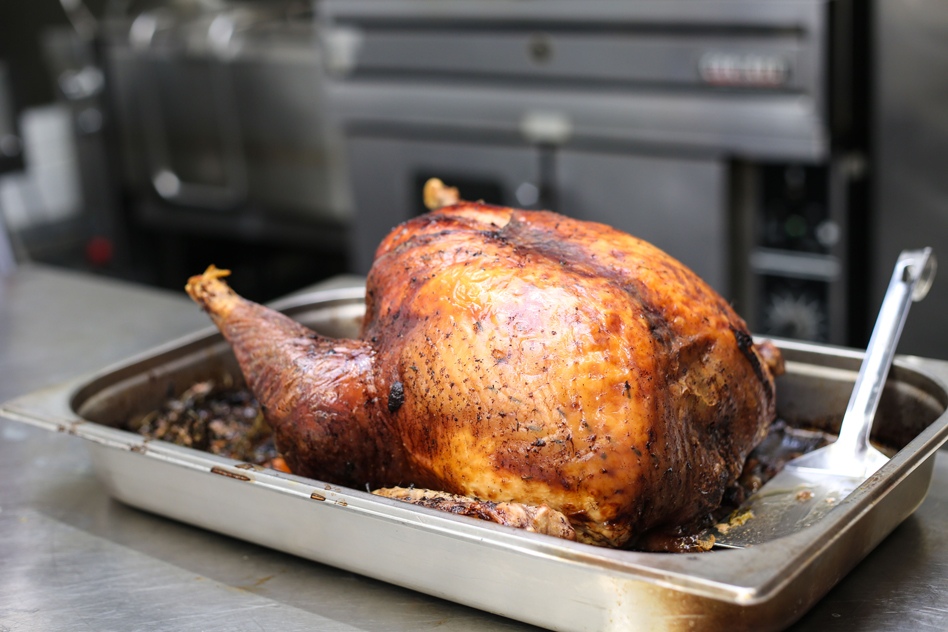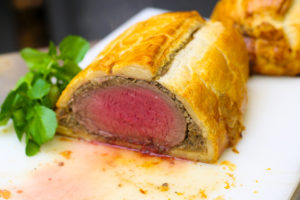Despite what some food photographers – keen to show off their success – say, super-expensive cameras are not necessary investments if you want to take lovely food photographs. Entry-level digital SLR camera are reasonably priced, and perfectly adequate if you’re shooting for food blogs. Regardless of how much you’re able to spend on getting the right kit or just a nicer lens, what really matters is how you use whatever technology you’ve got. If you can apply these tips and tricks well, even a smartphone can photograph food beautifully.
Lighting
When photographing food, you may be tempted to go with a consistently bright camera flash, or under a beam of beautiful strong sunlight. Direct sunlight is too harsh – the reflecting areas wash out the colours of your food and replace them with white patches. The strong shadows created by harsh natural light are usually distracting and make the image look flattened. The best way to photograph food is in diffuse natural light. Pick a spot that gets indirect light from several windows and from different directions if possible. This might mean shooting somewhere other than your kitchen. You can soften strong sunlight pouring in through a window by draping a white sheet over it.
Composition
This is a broad term meaning the arrangement of all the elements in your pictures. “The scene you want to shoot might offer a wealth of objects and colours vying for your attention, but well composed photographs make it clear what the most important subject is” say Super EventsSussex, specialist wedding caterers. If you are taking photos for a wedding you should check out this post.
Composition helps to create a tone for your photograph too: placement of objects can suggest action and playfulness, even when everything is perfectly still. For example, you can make a great food composition with Canape catering in London. The backgrounds and props you choose to include with your food can suggest the whole scene and mood of a meal – the same food on the same plate will look like the perfect choice for a casual brunch, romantic candlelit dinner, or party food, all depending on your styling decisions. Surface texture and colour, plate shape and colour, cutlery and nearby objects all influence the mood of your photos.
 Macro photography
Macro photography
It’s common in food and nature photography to use macro shots that naturally blur out some of the features of the background, helping to focus the viewer’s gaze on the main attraction. Taking at least a few macro close-ups is a great idea if you’re working with anything very fresh or very small – you’re showing that even under a microscope, the subject is super fresh, or at least super tasty (candy sprinkles photograph well with macro shots too). There’s no excuse, however, for a photo which is just generally blurry, even a little. Always make sure that at least one cookie, one forkful of pasta, or one blueberry is in perfect, sharp focus.
Keep it real and raw
Food photography isn’t about showing a perfect finished product, though you’d be forgiven for thinking that. Highlighting your cooking skills or celebrating the ingenuity of a chef is more complex than showing off a finished, static product. It’s about getting viewers and readers excited about the raw, organic process of cooking and eating the food. The best food photography captures the taste, scent, texture, and even sound of food as well as its appearance. You recreate all these sensations for your audience using visual cues that suggest freshness, certain flavours, how crunchy something looks, and even the atmosphere with which it was created. There’s something intrinsically inviting about food photography showing a perfect arrangement of little bowls full of measured ingredients waiting to be stirred and spooned into each other, but an image of splattered sauce or a huge piece of cake that crumbled off the knife and fell onto the floor might be more evocative.
Always take a tripod with you
Once you’ve spent all that time crafting the perfect composition, you don’t want to dismantle your ‘set’ or drive home work from a visit and find that your shots were blurrier than you realised. Even for standard shots, a tripod is a wonderful tool. For any exposure more than one sixtieth of a second, you could use the help of a camera tripod. tripods are especialy usefull when taking photograph for a Corporate Event
Angle
Some recipes or parts of the cooking process will look their best when shot directly from above, whereas other foods will look better side-on. If you want to show layers or inner texture, you can get really close to your subject. If the recipe post or article you’re illustrating will use several finished images, experiment with several angles. If you’re not sure which angle a subject will look best from, a good rule of thumb is to show food off at the angle you’d see it just as you were about to reach out and take a bite.
Keep it quick
Most food subjects begin to lose their visual appeal long before you’re ready to photograph. Try to have your gear set up and ready to go beforehand with the settings you plan to use, and keep leafy greens in the fridge until the last moment. For some professional tricks and tool to keep food looking fresh when it unavoidably won’t, keep reading.
Enhancement
Give meats, veg and just about anything cooked a very light brushing of oil. Any vegetable oil you have to hand will do, and some professional food photographers have been known to use WD-40 in a pinch. For fresh fruit and vegetables, leafy greens, iced lollies, and the outside of glasses (if you’re shooting smoothies or cocktails etc.), instead use a spritz of water. This will transform any lifeless leaf into one that looks crisp and freshly picked.
Steam
It is notoriously difficult to capture the steamy moments of fresh food on camera. Industry professionals recommend hiding incense or cotton wool soaked in boiling water behind the food, out of your camera’s view. If you want to make the steam curling from your dish or coffee really pop, try taking your shot against a darker background.


 Macro photography
Macro photography